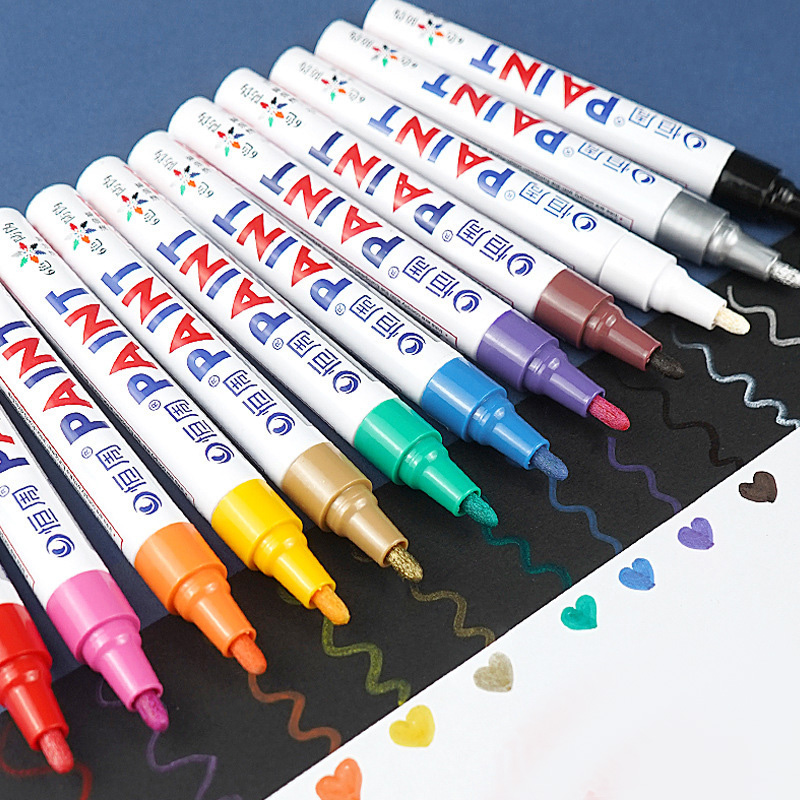Creative professionals have long relied on marker pens for visual communication, but today's multicolor markers offer a more sophisticated and specialized experience. Graphic designers, illustrators, and animators now use alcohol-based or water-based marker sets that deliver smooth blending, vivid saturation, and a wide tonal range.
Dual-tip marker pens—featuring a fine nib on one end and a broad chisel or brush tip on the other—have become the standard for artists seeking both precision and bold coverage. This dual-functionality allows seamless transitions from fine detail work to sweeping, expressive lines.
“Markers are no longer just tools for quick sketches,” says Lila Navarro, an art director based in Mexico City. “They’ve become essential mediums for finished illustrations and concept art. The color depth and blending potential rival that of traditional paints.”
brands like Copic, Prismacolor, and Ohuhu are continuously expanding their palettes and introducing features such as replaceable nibs, refillable barrels, and improved ink consistency to appeal to professionals and hobbyists alike.
Professional Applications on the Rise
While multicolor markers are booming in creative markets, they are also gaining traction in professional settings. Architects, engineers, and product designers use markers to visualize ideas quickly and present drafts with visual clarity. In sectors like fashion and interior design, markers provide a fast, efficient method to render patterns, textures, and color schemes during the early design process.
In corporate environments, marketers and facilitators are turning to markers for whiteboarding, brainstorming, and agile project management. The visual nature of color-coded planning systems improves collaboration and communication.
“Color plays a powerful role in idea retention,” explains James Thornton, a workplace strategist. “When teams use multicolor markers in workshops and strategy sessions, it enhances participation and memory retention. It’s tactile, visual, and fast.”
Educational Use Expands Across Ages
The classroom remains a core market for multicolor markers, but use has evolved beyond simple coloring activities. Educators at all levels—from kindergarten to college—employ markers for visual note-taking, concept mapping, and presentation development.

Specialty markers for educational use now include washable inks, low-odor formulas, and ergonomic grips. There’s also a growing market for markers designed specifically for early learners, with thicker bodies and conical tips that support motor skill development.
Interactive learning is another growing trend. Some schools incorporate dry-erase multicolor markers in group exercises or personalized learning stations. “Students respond better to color-coded instructions and tasks,” says Alice Wu, an elementary school teacher in Singapore. “It boosts engagement and helps them organize information visually.”
Sustainability and Innovation Take Center Stage
Sustainability has become a central focus in the marker pen industry. Consumers are increasingly aware of the environmental impact of disposable plastic products, and manufacturers are responding with refillable markers, recyclable packaging, and eco-friendly ink formulas.
Many brands now offer refill stations for popular markers or sell cartridges that reduce overall waste. Some companies are even exploring biodegradable barrels made from plant-based materials.
“Innovation isn’t just about performance anymore—it’s also about responsibility,” says Erik Lau, head of product development at a global stationery brand. “We’re designing markers with long-term usability and reduced environmental impact in mind.”
Additionally, advancements in ink technology have led to hybrid markers with both digital and analog applications. Some modern markers feature conductive ink that interacts with touchscreen devices, allowing users to sketch on paper and have their work digitized in real-time.
Market Outlook and Consumer Trends
The global multicolor marker pen market is projected to grow at a compound annual growth rate (CAGR) of 5.2% through 2030. Growth is being driven by increasing demand from creative industries, educational institutions, and remote workers who value tactile and visual tools for communication.
Online communities, such as planner enthusiasts, bullet journalers, and hand lettering artists, are playing a significant role in popularizing multicolor markers. Viral content on social platforms like TikTok, Pinterest, and Instagram showcases marker-based techniques and DIY tutorials, further fueling demand.
Retailers have responded by offering curated marker sets based on specific applications—such as architecture, manga, journaling, or fashion design—creating accessible entry points for both beginners and professionals.